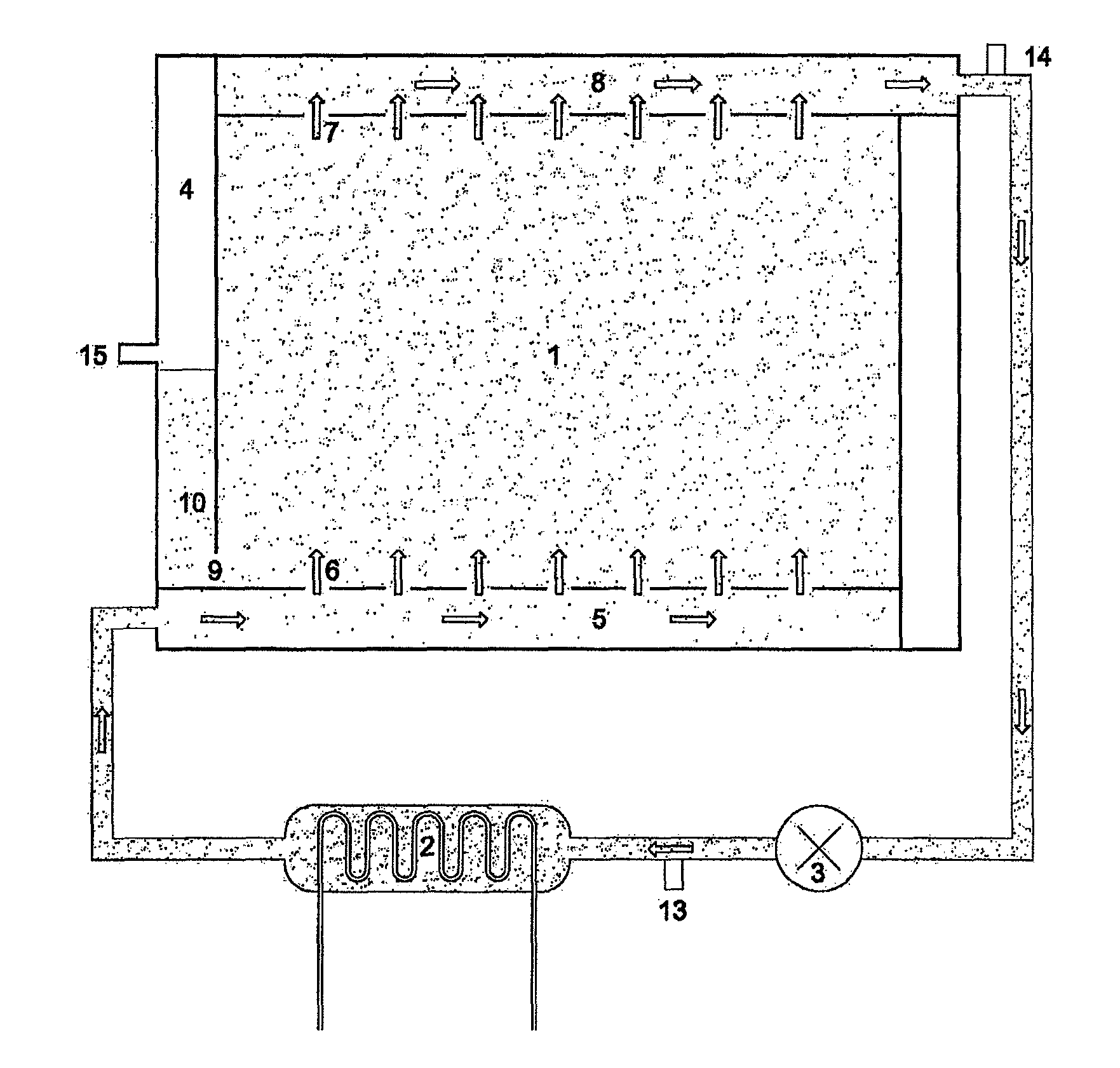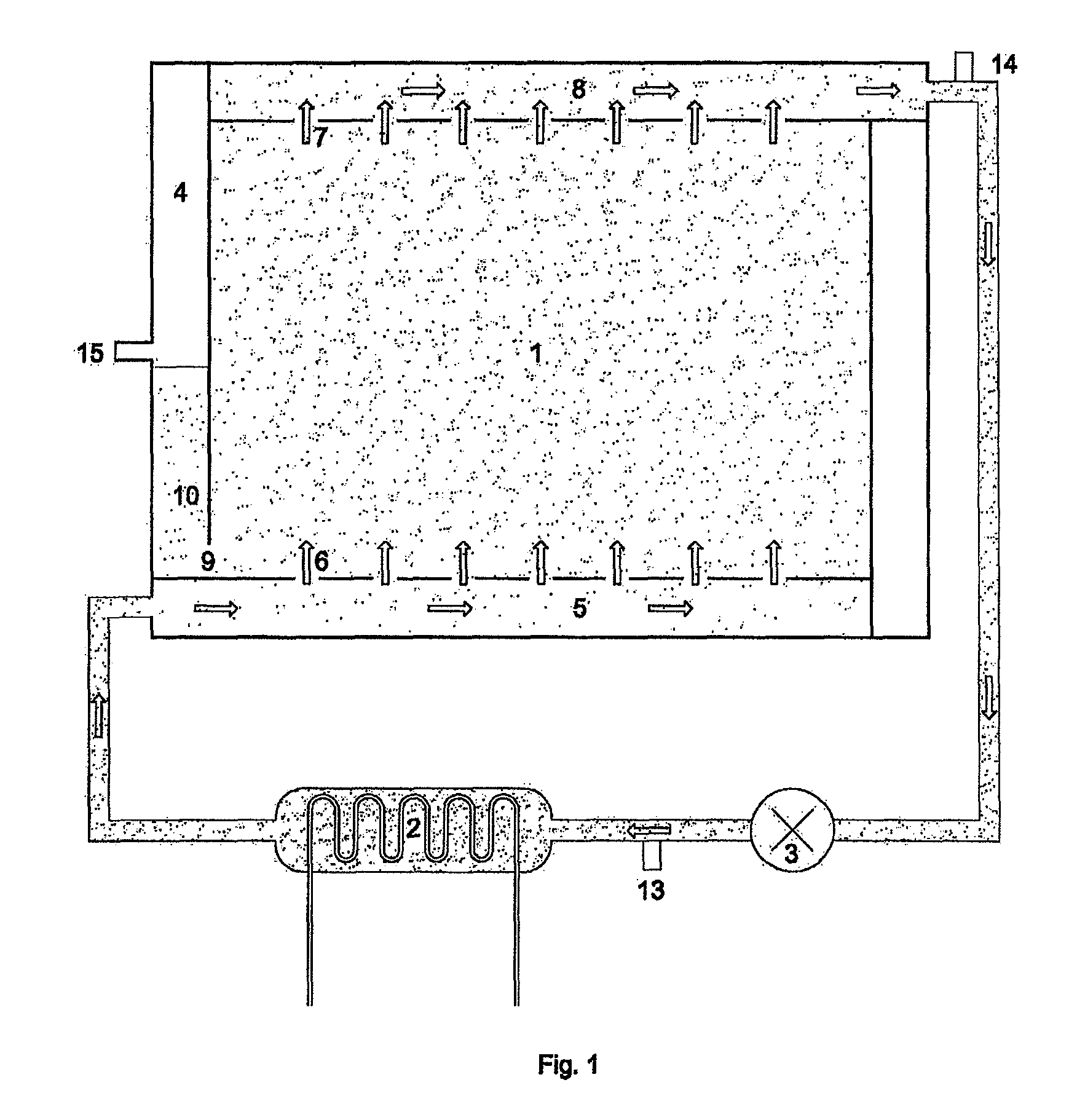Active transparent or translucent enclosures with energy control capacity
a transparent or translucent enclosure technology, applied in the field of building construction and climatization, can solve the problems of large building energy consumption, significant hydrostatic pressure, and large energy consumption in buildings, and achieve the effect of reducing thickness
- Summary
- Abstract
- Description
- Claims
- Application Information
AI Technical Summary
Benefits of technology
Problems solved by technology
Method used
Image
Examples
Embodiment Construction
[0028]In order to present one embodiment, an enclosure for outer facades is considered. In this case, the system incorporates a double glass insulating unit with a gas chamber (11), comprised by elements (16), (17) and (21) which increases the insulating function and is in contact with the exterior. Instead, if the system is used as an interior partition, then the inclusion of the double glazing unit with gas chamber is not required, and both faces of the water chamber would act as radiating surfaces towards the interior of the building.
[0029]An aluminum frame (20) is build out of rectangular hollow beams: the two horizontal beams form the distributor (5) and collector (8) and one of the vertical beams forms the hydrostatic pressure reducer device (4). Next, a double glazing unit is fixed on one of the sides of the frame and on the other side a laminated glass formed by two glass planes (18) and (19) joined together with a Poly Vinyl Butyral layer (12). In the present embodiment a c...
PUM
 Login to View More
Login to View More Abstract
Description
Claims
Application Information
 Login to View More
Login to View More - R&D
- Intellectual Property
- Life Sciences
- Materials
- Tech Scout
- Unparalleled Data Quality
- Higher Quality Content
- 60% Fewer Hallucinations
Browse by: Latest US Patents, China's latest patents, Technical Efficacy Thesaurus, Application Domain, Technology Topic, Popular Technical Reports.
© 2025 PatSnap. All rights reserved.Legal|Privacy policy|Modern Slavery Act Transparency Statement|Sitemap|About US| Contact US: help@patsnap.com



